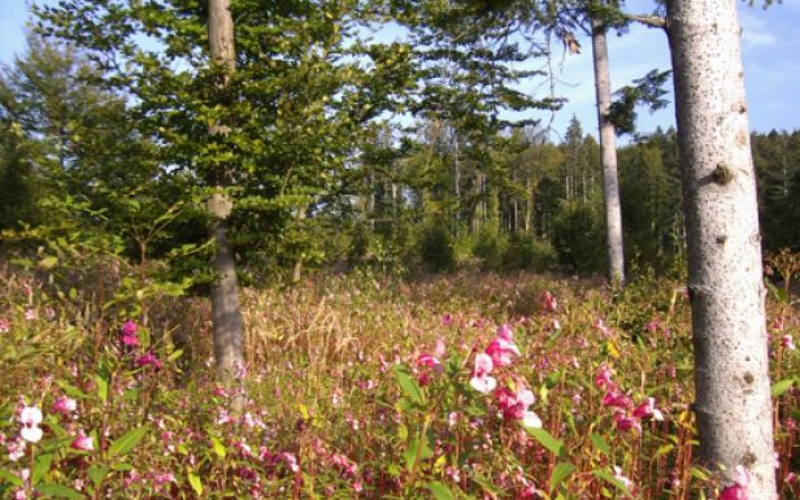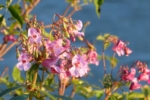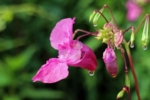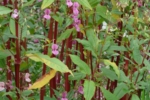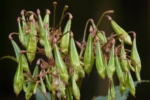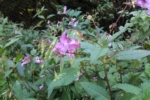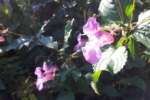How to Identify Himalayan Balsam
Himalayan balsam takes the title of Britain’s tallest annual plant, growing to 2.5 metres tall or more. Like all plants, the time of year, the local climate and its lifecycle are factors which influence Himalayan balsam identification.
Appearance
- The Himalayan balsam (Impatiens glandulifera) is an upright, annual plant.
- It has long, pointed leaves which have serrated edges and grow in pairs or whorls of three along the stems.
- The stems may be green or a striking red, often a mixture of the two.
- The flowers can vary between white, pink and purple with five petals giving a hooded appearance.
- The fruit capsules have an explosive opening action, firing seeds in all directions away from the plant.
Habits
- Himalayan balsam grows in stands (meaning groups of individual plants) which can be very large in the area they take up.
- Individual plants grow from seedlings each year, rapidly gaining height and blocking out the light and available space for other, usually native, plants to grow.
- Himalayan balsam is a prolific nectar producer – our bees and other insects will often neglect native plants when Himalayan balsam is available, leading to a reduction in pollination for those plants affected.
- As the plant dies back in the autumn, masses of leaves and stems begin to drop; if this is next to a waterway, flooding problems can then ensue.
- In the winter after die-back, Himalayan balsam stands leave bare earth where the plants had been growing, leading to potential problems with erosion, especially problematic along rivers.
Himalayan Balsam Identification Service
PBA Solutions undertake site surveys dedicated to Himalayan balsam identification, if it is found, we document and report on the findings. Our reports can be used as part of the property management or development process as well as outlining the most appropriate methodology for a Himalayan balsam treatment or removal programme.
PBA Solutions can help you with our free ‘Spot My Weed!’ invasive weed identification service. By clicking the link, you can send us some photographs (close-ups are preferable) of the plant(s) you have found and email them with any additional details and your name and telephone number. We will look at the photographs and do our best to help identify the weed for you.


